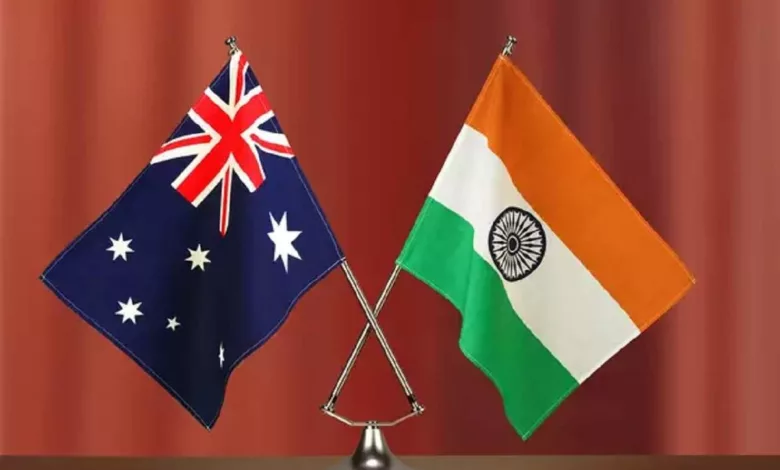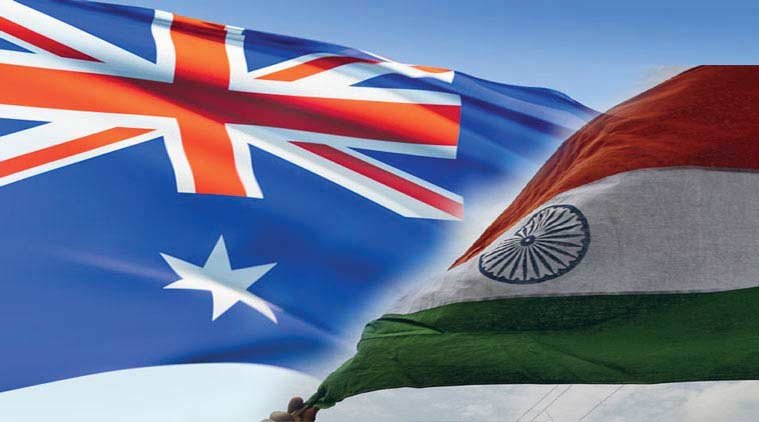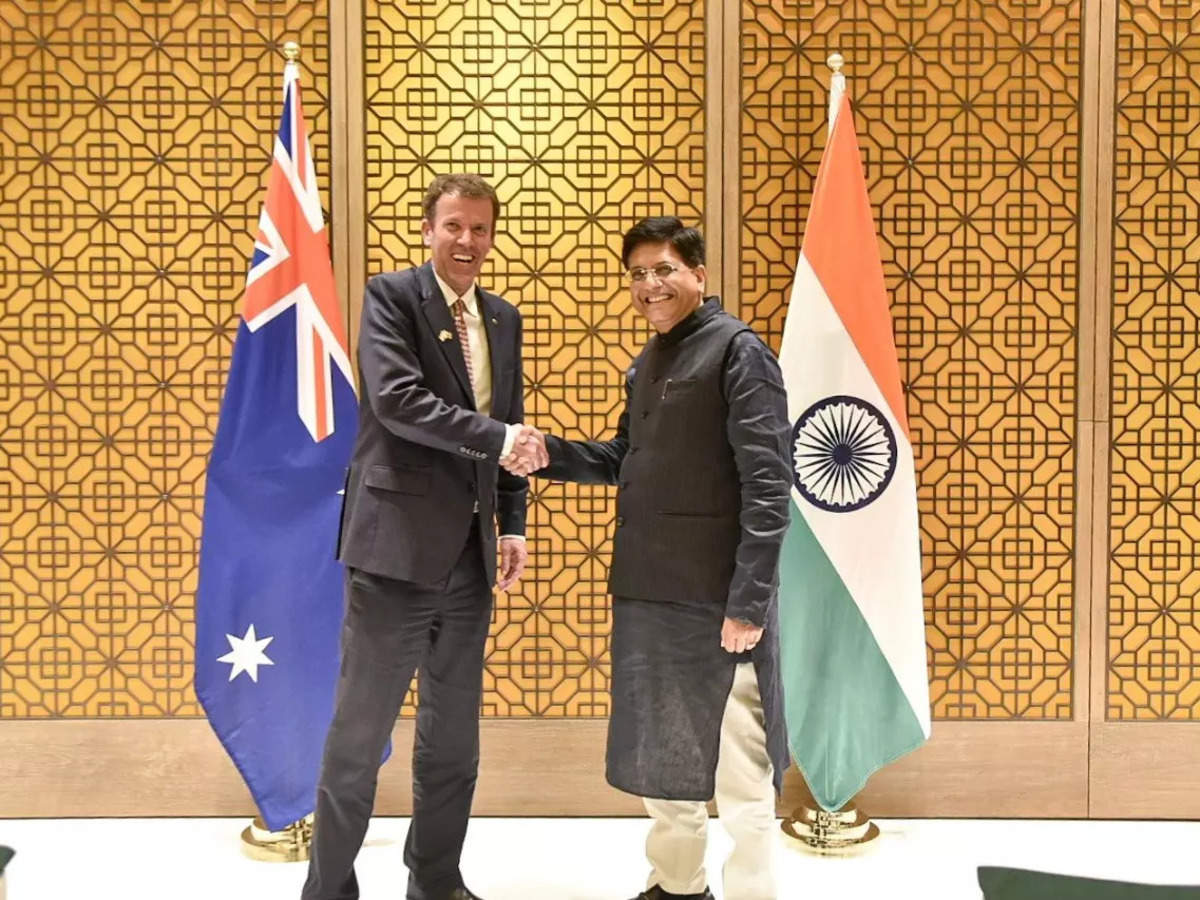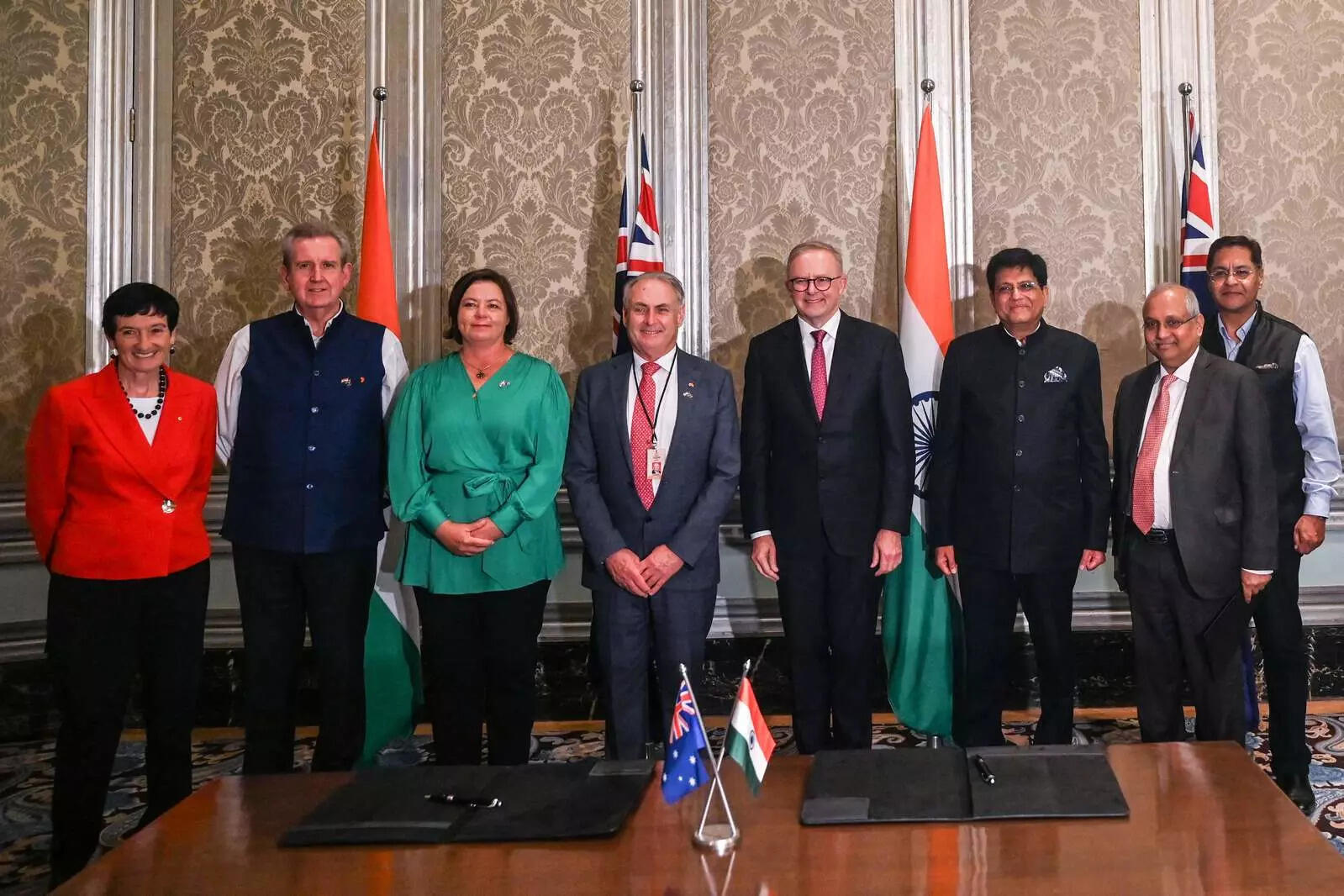India, Australia To Conclude Talks On CECA ‘As Soon As Possible’
Australia's Trade and Tourism Ministers Farrell and Goyal said in a joint statement that they were pleased with the progress made in resolving several bilateral technical market access issues and were "waiting for completion" of CECA (Comprehensive Economic Cooperation Agreement) between India and Australia in brief.

Piyush Goyal, India’s Trade and Industry Minister, and Don Farrell, his Australian counterpart, met on Saturday to discuss strategies to boost investment in the two countries and global free trade negotiations. Australia’s Trade and Tourism Ministers Farrell and Goyal said in a joint statement that they were pleased with the progress made in resolving several bilateral technical market access issues and were “waiting for completion” of CECA (Comprehensive Economic Cooperation Agreement) between India and Australia in brief.
An ambitious, Comprehensive Economic Cooperation
The agreement (ECSC) should build on the framework provided by the Economic and Trade Cooperation Agreement [signed last year] and cover new areas of trade, investment, and cooperation created by made possible by Prime Ministers Narendra Modi and Anthony Albanians. According to the declaration, the ECSC will raise living standards, create new employment opportunities and improve general prosperity in both countries.
What were the main topics of discussion during the Australian Prime Minister’s recent visit to India?
– The other nation wishes to work with India and develop ties in the areas of security, economics, and culture.
– The two nations agreed on a mandate for the Australia-India Solar Task Force and also signed a memorandum of understanding for sports and audiovisual co-production deals. India was concerned about the damage done to Hindu temples in Australia by supporters of the Khalistani government. The other nation responded that it will protect and protect its Indian community. India-Australia relations existed before their countries ‘ Independence from Britain in 1947.
The British East India Company controlled all trade through Calcutta to and from the New South Wales penal colony. Before independence, the two countries maintained diplomatic ties with the opening of the Indian Trade Office in Sydney in 1941. The first step in developing closer ties between the two countries came in 1991 with the end of the Cold War and a simultaneous decision to undertake important economic reforms.
Post-Independence Connections: With continued commercial engagement, this relationship has solidified over time and now resembles a strategic partnership. countries have taken practical steps in key enabling technologies, maritime issues, defense relations, economic and trade relations, and quadripartite cooperation since strengthening these ties in 2020. India Economic and Trade Cooperation Agreement was also signed – (India-Australia ECTA) between the two nations in 2022. It is a trade pact designed to open new opportunities for both nations and increase bilateral trade.
The two ministers discussed commitments under the G-20, the Indo-Pacific Economic Framework (IPEF), and the World Trade Organization, as well as the next steps to strengthen the Bilateral Economic Partnership further. The two ministers underscored their desire to streamline WTO operations and establish a fully operational dispute settlement mechanism within the next year. They agreed to take part successfully in the preparations for the 13th WTO Ministerial Conference to be held in Abu Dhabi in 2024.
Ministers agreed that the other nation and India have high ambitions and will continue to work together on issues of common interest, such as the economy and strength of supply.
In the last fiscal year, mutual trade between India and Australia reached $31 billion. Both sides agreed that given the trade complementarity between the two nations, there is great potential for a significant increase in bilateral trade over the next five years. On March 12, Prime Minister Narendra Modi also recounted an anecdote told to him by Australian Trade Minister Don Farrell of how one of his instructors had emigrated from Goa, underscoring the deep cultural connection between Australia and India. Mr. Farrell visited India last week with Australian Prime Minister Anthony Albanese.

The Australian Minister for Commerce and Tourism, Don Farrell, mentioned an unusual thing during a luncheon honoring my buddy, the Prime Minister of Albania. He acknowledges Mrs. Ebert, a Grade one teacher who had a profound impact on his life, for giving him a solid foundation in education, in a sequence of tweets from Mr. Modi. In the 1950’s Mrs. Ebert, her husband, and daughter Leonie moved from Goa, India to Adelaide, where they began working as teachers.
He noted that Mrs. Ebert’s daughter Leonie Ebert was later President of the South Australian Institute of Teachers. “I was delighted to learn of this incident which underscores the deep cultural ties between Australia and India. It’s also encouraging to hear someone speak positively about their teacher, Modi noted.
In the Indian Ocean region and further into the Pacific, India wants to play a crucial strategic role. In this area, India sees itself as a “network security provider”; said, Prime Minister Manmohan Singh. But what would that mean for India’s relations with its neighbors? India has invested heavily in modernizing its armed forces over the past decade or more. Part of this is the purchase of aircraft carriers, submarines, and planes that will allow India to project its power over longer distances. However, India places relatively little emphasis on building stronger security alliances in the region, particularly with the core Indian Ocean states.
In many ways, the calibre of these connections will determine whether India is recognized as a regional leader. The Union of India and Australia will gain importance for both nations as one union. They can form a strategic alliance, effectively stretching across the Indo-Pacific. The two nations are the dominant sea powers among the Indian Ocean states and share many commonalities in terms of culture and values.
Although the two nations have long operated in fundamentally different strategic sectors, they are increasingly converging in these areas. India has strategic interests in the Indo-Pacific, while Australia has an increasing interest in both India and the Indian Ocean region more generally. Maritime security, regional stability, and China’s influence are common strategic concerns. There are few opportunities to build a solid strategic alliance, but there will also be challenges for both sides.

India’s role as a regional leader in the dimension
1. India wants to be recognized as a regional “grid security provider” and take the lead in the Indian Ocean strategy. In addition to strengthening its military capabilities, India must also focus on building stronger security partnerships with other major countries in the region, particularly with middle powers like Australia, Indonesia, and South Africa.
2. A changing strategic environment: India’s and Australia’s interests are increasingly aligning while the balance of power in Asia is shifting. Both nations have an interest in preserving maritime freedom along the entire Asian coast and are also concerned about the impact of China’s rise and stability in the region. There are many opportunities for bilateral cooperation.
3. Indian Perspectives on Australia: According to India, Australia is one of several important new strategic partners in the Indo-Pacific region. However, India has a long history of strategic autonomy and some New Delhi officials are reluctant to forge ties with Australia.
4. Australia’s Perspective on India: Australia wishes to develop a comprehensive strategic partnership with India, encompassing the country’s political, economic, and security spheres. However, Australia must step out of its comfort zone and learn to work with India in innovative and extraordinary ways if it is to build a stronger security relationship.
Next steps
1. Intensify security discussions: India and Australia often have strategic discussions at different levels, but these discussions need to be deepened. Other important partners such as Indonesia, Japan, and the United States could be included in the discussion.
2. Participation in international coalitions: Australia takes leadership of two Indian Ocean coalitions, the Indian Ocean Naval Symposium, and the Indian Ocean Regional Cooperation Association (IOR-ARC) (IONS).To strengthen and improve these coalitions, India and Australia must work together. In addition, the two nations must cooperate on international initiatives to stop the proliferation of weapons of mass destruction.
3. Conduct joint naval training and exercises: Closer security cooperation would depend on the Indian and Australian navies. The bilateral naval exercises between Australia and India are to take place as soon as possible. In addition, the Indian Navy has the opportunity to participate in multilateral exercises sponsored by Australia, involving countries in the Asia-Pacific region. Long-term cooperation between the two militaries is possible in specialized areas, including amphibious capabilities and underwater training.
4. Humanitarian and Disaster Relief: India and Australia can make a significant contribution to regional development by working together on regional disaster relief. There will also be the possibility of frequent communication between the two nations.
5. Cooperation to protect maritime borders: One of our main concerns is the protection of our maritime borders from threats such as terrorism. Together, Australia and India can continue to build maritime threat detection systems in the Indian Ocean. It can also be done jointly with big nations like Indonesia.
6. Establishing common interests in Antarctica: The opening of Australia’s presence in the region has created many opportunities for cooperation with the new Indian station Bharati, particularly in the areas of logistics and research. Cooperation in Antarctica could take the form of a physical manifestation of shared goals in the larger Indian Ocean region.

What can be done to improve India- Australia relations?
Focus on Economic Competitiveness: India should focus on increasing its economic competitiveness as it would compete with countries like China, ASEAN, Chile, Japan, Korea, and New Zealand, most of which already have FTAs with Australia in the commercial sectors.
Reducing religious polarization in India: India should reduce religious polarization in the country, as was the case with the attack on temples in The other nation by Khalistan groups. Forcing Australia to deliver on its promise to amend its national tax code to stop taxing the income of foreign Indian companies providing technical services to Australia would require active diplomatic engagement.
Science and Technology Cooperation: The other nation and India have a positive record of joint research and innovation activities. The Australian Government’s $1.1 billion National Strategy for Science and Innovation opens up new opportunities for collaboration with India.” launch India”; and “Made in India”; Campaigns in India are in line with program objectives.
Promotion of space cooperation: India can provide commercial space applications to Australia for many Australian space projects. Common interests, including China, Pakistan, Afghanistan, terrorism, and maritime security, should be strategically communicated regularly. The other nation and India must declare mutual security. India is expected to accept Australia’s invitation to cooperate as a key maritime partner.
edited and proofread by nikita sharma





